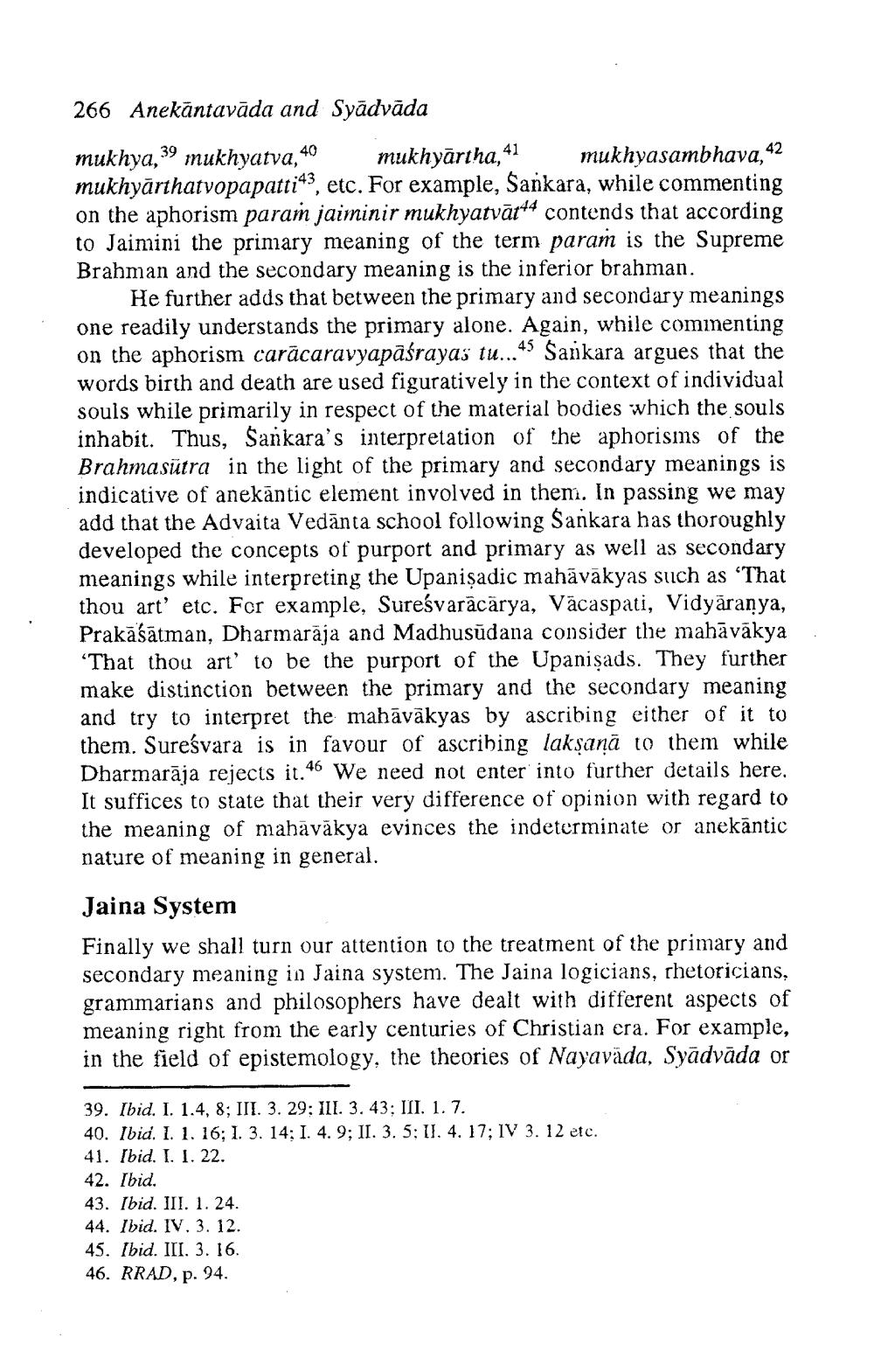________________
266 Anekāntavāda and Syādvāda
mukhya, 39 mukhyatva, 40 mukhyārtha,41 mukhyasambhava, 42 mukhyārthatvopapatti43, etc. For example, Sankara, while commenting on the aphorism param jaiminir mukhyatvār44 contends that according to Jaimini the primary meaning of the term param is the Supreme Brahman and the secondary meaning is the inferior brahman.
He further adds that between the primary and secondary meanings one readily understands the primary alone. Again, while commenting on the aphorism carácaravyapāśrayas tu...45 Sankara argues that the words birth and death are used figuratively in the context of individual souls while primarily in respect of the material bodies which the souls inhabit. Thus, Sankara's interpretation of the aphorisms of the Brahmasütra in the light of the primary and secondary meanings is indicative of anekāntic element involved in them. In passing we may add that the Advaita Vedānta school following Sankara has thoroughly developed the concepts of purport and primary as well as secondary meanings while interpreting the Upanişadic mahāvākyas such as "That thou art' etc. For example, Sureśvarācārya, Vācaspati, Vidyāranya, Prakāśātman, Dharmarāja and Madhusudana consider the mahāvākya “That thou art' to be the purport of the Upanisads. They further make distinction between the primary and the secondary meaning and try to interpret the mahāvākyas by ascribing either of it to them. Sureśvara is in favour of ascribing lakṣaṇā to them while Dharmarāja rejects it.46 We need not enter into further details here. It suffices to state that their very difference of opinion with regard to the meaning of mahāvākya evinces the indeterminate or anekāntic nature of meaning in general.
Jaina System Finally we shall turn our attention to the treatment of the primary and secondary meaning in Jaina system. The Jaina logicians, rhetoricians, grammarians and philosophers have dealt with different aspects of meaning right from the early centuries of Christian cra. For example, in the field of epistemology, the theories of Nayavada, Syādvāda or
39. Ibid. I. 1.4, 8; III. 3. 29: III. 3. 43; III. 1. 7. 40. Ibid. I. 1. 16; 1. 3. 14; 1. 4. 9; II. 3. 5: II. 4. 17; IV 3. 12 etc. 41. Ibid. I. 1. 22. 42. Ibid. 43. Ibid. III. 1. 24. 44. Ibid. IV. 3. 12. 45. Ibid. III. 3. 16. 46. RRAD, p. 94.




